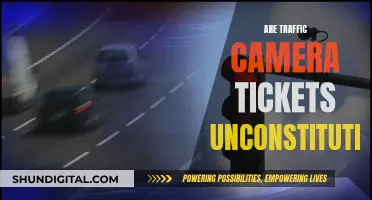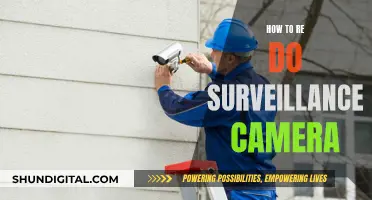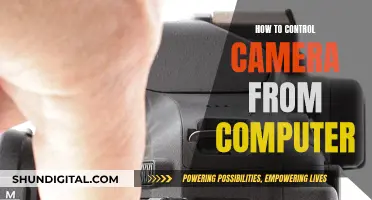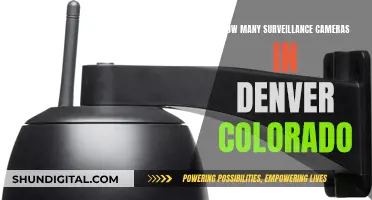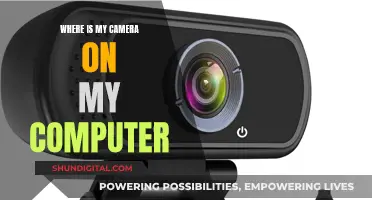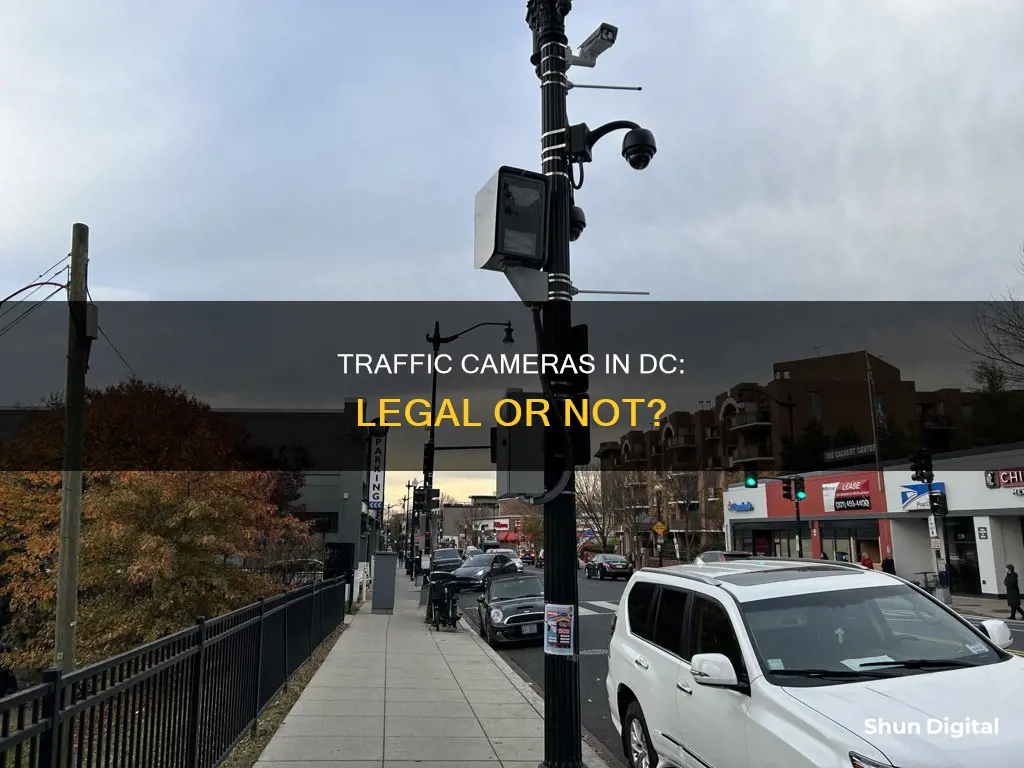
Traffic cameras in Washington, DC, are a contentious issue. While some argue that they are necessary for enhancing road safety and reducing violations, others claim that they are merely money-making schemes that unfairly target certain demographics. The legality of these cameras is called into question, with some drivers even taking legal action against the local government. This debate highlights the delicate balance between public safety and individual rights, and it remains to be seen how DC will address these concerns to ensure fair and effective traffic enforcement.
| Characteristics | Values |
|---|---|
| Purpose | To enhance the safety of the District's residents and visitors |
| Mechanism | Cameras automatically photograph the license plates of vehicles whose drivers violate the regulations |
| Camera Placement | Locations with a high incidence of violations and crashes |
| Notification | The MPDC notifies the public at least 30 days in advance of the installation of any new red-light camera |
| Citations | Mailed to the registered vehicle owner |
| Vehicle Owner Responsibility | The owner is responsible for all tickets issued to the vehicle, regardless of who was driving, unless the vehicle was stolen |
| Fines | The same as the fines for violations issued by a police officer |
| Legal Basis | DC Official Code (Division VIII, Title 50, Subtitle VII, Chapter 22, Subchapter 5) |
What You'll Learn
- Traffic cameras in DC are predominantly placed in Black neighbourhoods
- DC issues 2 million tickets annually, most of which are camera tickets
- Traffic cameras are placed in locations with a high incidence of violations and crashes
- Camera tickets are issued for red-light violations, speeding, running stop signs and oversized vehicles
- Traffic cameras can enhance safety and reduce racial disparities in traffic stops

Traffic cameras in DC are predominantly placed in Black neighbourhoods
In Washington, D.C., traffic cameras are predominantly placed in Black neighbourhoods. A 2018 report by the D.C. Policy Center revealed that drivers in predominantly Black neighbourhoods received more moving violations and higher fines, despite not experiencing a greater number of crashes.
The report, which analysed moving violation citations, crash data, and census data from 2016, found that census tracts with higher proportions of Black residents were associated with a higher incidence of traffic fines. This suggests that the racial geography of D.C. plays a role in the enforcement of traffic violations.
In particular, the report found that drivers in Black-segregated neighbourhoods received double the average number of moving violations per capita, while drivers in White-segregated neighbourhoods received just one-eighth of the average. This means that a driver in a Black neighbourhood is over 17 times more likely to receive a moving violation, at a cost of 16 times more per resident, than a driver in a White neighbourhood.
The D.C. Policy Center report is not the only source to highlight this disparity. The Fines and Fees Justice Center has also published research showing that predominantly Black neighbourhoods in D.C. bear the brunt of automated traffic enforcement. This research analysed moving violation citations, crash data, and census data from 2016 and reached similar conclusions to the D.C. Policy Center report.
While proponents of speed cameras and red-light cameras argue that they remove the potential for racially discriminatory traffic enforcement, critics argue that they can unintentionally further racial disparities. Given the high degree of racial segregation in D.C., the placement and use of these technologies can still have a disparate impact on different racial groups.
In response to these concerns, Councilman Kenyan McDuffie (D-Ward 5) has proposed legislation to ensure that the use of automated traffic enforcement devices is equitable across the city. Several other pieces of legislation have also been introduced to lessen the burden of traffic tickets on D.C. residents.
The Evolution of Camera Bellows: Materials and Design
You may want to see also

DC issues 2 million tickets annually, most of which are camera tickets
The District of Columbia issues 2 million tickets annually, with most of these being camera tickets. The District Department of Transportation (DDOT) has implemented an automated photo enforcement program to enhance the safety of DC's residents and visitors. This program is designed to reduce the number of drivers who violate traffic regulations by automatically photographing vehicles whose drivers break the rules. The cameras enforce traffic laws and reduce violations, with the added benefit of enhancing traffic safety while promoting community policing.
The program includes camera systems that capture red-light running violations at more than three dozen intersections, as well as photo radar systems that reduce speeding in problem areas. The cameras have contributed to a dramatic reduction in red-light running at these intersections, and the 24-hour coverage they provide allows for more consistent, strategic, and efficient enforcement of traffic regulations. This is a top priority for citizens, and it frees up police resources for other priorities like focused law enforcement, neighborhood problem-solving, and crime prevention.
The number of speed camera tickets issued to drivers on DC 295 more than doubled between May and June of one year, jumping from 9,438 to 22,889. This increase occurred despite an overall drop in moving violations during that period. Camera ticket hot spots include the 600 Block of Kenilworth Avenue NE, 2200 K St. NW, and the Third Street Tunnel.
The District's traffic enforcement program has been running for over two decades, and it has a reputation as a revenue generator. Critics argue that city leaders are targeting commuters and relying too heavily on devices to enforce traffic laws. However, some residents and advocates for safer streets support the program, especially amid rising traffic fatalities. In 2021, forty people were killed in traffic collisions in DC, the highest number since 2007.
To address this issue, Mayor Muriel E. Bowser has proposed a large-scale modernization and expansion of the city's automated enforcement program, with plans to more than triple the number of traffic cameras that issue fines by the end of the fiscal year 2023. This expansion would include the addition of 170 new speed cameras and dozens more targeting other traffic violations.
Troubleshooting Note 9 Camera Focus Issues
You may want to see also

Traffic cameras are placed in locations with a high incidence of violations and crashes
Traffic cameras are placed at locations where chronic violations cause crashes and endanger the community. The Metropolitan Police Department notifies the public at least 30 days in advance of the installation of any new red-light camera, and the locations of all currently installed red-light cameras are posted on the Department's website.
The goal of the District's automated photo enforcement program is to reduce traffic violations and, as a result, decrease the number of crashes, prevent injuries, and save lives. The cameras have the added benefit of enhancing traffic safety while promoting community policing. Because the red-light cameras provide 24-hour-a-day coverage, they allow the police to be more consistent, more strategic, and more efficient in its enforcement of traffic regulations.
A worldwide review of studies found that speed cameras led to a reduction of "11% to 44% for fatal and serious injury crashes". The UK Department for Transport estimated that cameras had led to a 22% reduction in personal injury collisions and 42% fewer people being killed or seriously injured at camera sites.
Pentax Cameras: Capturing the Cosmos
You may want to see also

Camera tickets are issued for red-light violations, speeding, running stop signs and oversized vehicles
The use of traffic cameras to enforce road safety is legal in Washington, DC. The District of Columbia's Automated Traffic Enforcement program uses cameras to enforce traffic laws and reduce violations. These cameras are placed in locations with a high incidence of violations and crashes, enhancing community safety without requiring additional police resources.
Camera tickets are issued for red-light violations, speeding, running stop signs, and oversized vehicles. The cameras capture images of the rear of the vehicle and its license plate, excluding the driver and passengers. When a violation occurs, the camera records the date, time, vehicle speed, and time elapsed since the signal turned red. The images are analysed, and the registered owner of the vehicle is issued a citation, which includes a photo of the violation.
Red-light violations are detected by camera systems installed at intersections with a history of violations and crashes. These cameras capture images of vehicles running red lights, recording relevant data such as the date, time, and vehicle speed. The fines for running a red light are $150, and no points are assessed for photo enforcement violations in DC.
Speeding violations are identified using speed cameras that detect vehicles exceeding the posted speed limit. These cameras capture photographs of the vehicle's rear and license plate. The registered owner of the vehicle then receives a notice of the speeding infraction. The fines for speeding can reach up to $250, depending on how much the driver exceeded the speed limit.
In the case of running stop signs, camera systems similar to those used for red-light violations may be employed. These cameras capture images of vehicles failing to come to a complete stop at stop signs, and the registered owner of the vehicle receives a citation.
Additionally, camera systems can identify oversized vehicles that may pose a safety risk or violate weight restrictions on certain roads. The registered owner of such a vehicle would receive a citation for violating the applicable regulations.
Wired Lorex Cameras: How Long Do They Last?
You may want to see also

Traffic cameras can enhance safety and reduce racial disparities in traffic stops
Traffic cameras have been a topic of debate in recent years, with some arguing that they are an invasion of privacy, while others claim that they have many benefits. One of the main arguments in favour of traffic cameras is that they can enhance safety and reduce racial disparities in traffic stops.
Enhancing Safety
Traffic monitoring cameras are an effective tool for enhancing road safety. They are strategically mounted on roadways to capture real-time photos and videos of traffic flow, providing authorities with valuable data for decision-making. These cameras assist in enforcing traffic laws, identifying violations, and responding promptly to incidents, ultimately helping to optimise traffic flow and reduce congestion. Additionally, they serve as a deterrent to reckless driving, as violators can be easily identified and penalised.
The effectiveness of speed cameras in reducing road collisions and injuries has been demonstrated in various studies. For example, a study in Barcelona showed that speed cameras led to a 27% decrease in road collisions, resulting in fewer injured people and vehicles involved in accidents.
Reducing Racial Disparities in Traffic Stops
Traffic cameras have also been suggested as a potential solution to reduce racial disparities in police stops. A study by Rutgers University found that support for automated traffic cameras increased when participants considered their potential impact on racial justice. The study revealed that Black drivers were overrepresented in traffic stops, constituting 23% of stops in New Jersey, despite making up only 12% of the population.
Additionally, local law enforcement agencies, such as police and sheriff departments, were found to have higher search rates for Black and Latino drivers, even though discovery rates for contraband or evidence were lower for these groups compared to White drivers. This suggests that racial bias may be a contributing factor to disparities in traffic stops.
By implementing traffic cameras, interactions between civilians and police officers can be minimised, potentially reducing the impact of racial bias in traffic stops. Camera locations should be based on crash statistics rather than demographic factors to ensure equitable placement. Additionally, revenue from camera programs should be reinvested into road infrastructure rather than police budgets.
In conclusion, traffic cameras have the potential to enhance safety on the roads and reduce racial disparities in traffic stops. While there may be concerns about civil liberties and privacy, careful implementation and legal frameworks can help address these issues while still utilising the benefits of traffic camera technology.
Understanding DVR Mode on Your Muddy Camera
You may want to see also
Frequently asked questions
The Metropolitan Police Department has implemented an automated photo enforcement program to enhance the safety of the District's residents and visitors by reducing the number of drivers who violate traffic regulations.
Cameras capture violations on film and record all relevant data, such as the date, time, vehicle speed, and time elapsed since the beginning of the red signal in the case of a red-light violation. The images are analysed, and the registered owner of the vehicle is verified. A citation, including a photo of the violation, is then mailed to the owner.
The cameras are placed at locations with a high incidence of violations and crashes, particularly intersections with a history of red-light running and areas with chronic speeding issues. The MPDC notifies the public at least 30 days in advance of any new red-light camera installations, and the locations of all current cameras are posted on the Department's website.
The citation is mailed to the registered owner of the vehicle, who is responsible for all automated enforcement tickets issued, regardless of who was driving at the time of the violation. The ticket includes instructions on how to pay the fine or request a hearing. Failure to respond within the specified timeframe can result in additional fees and penalties.



